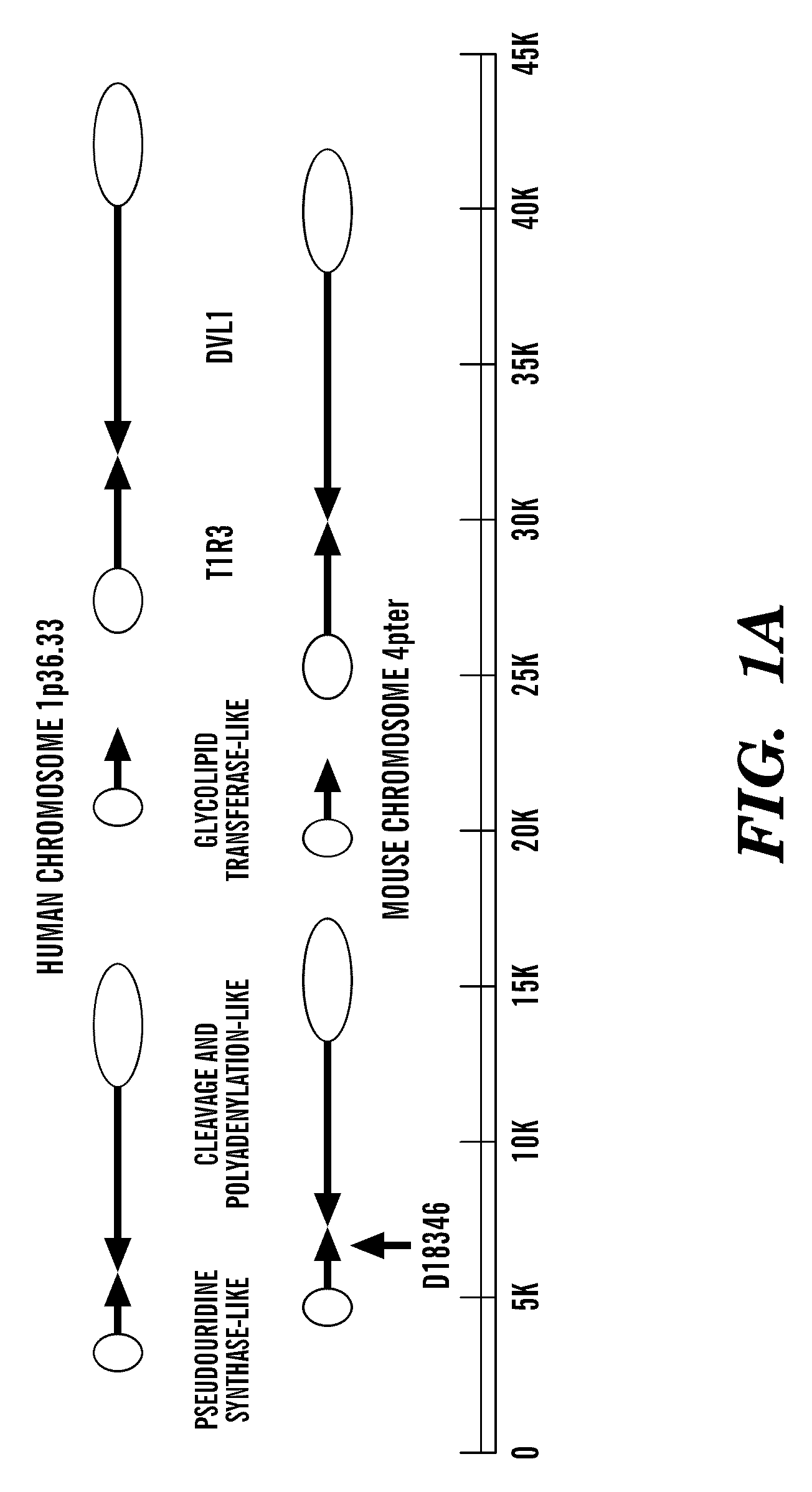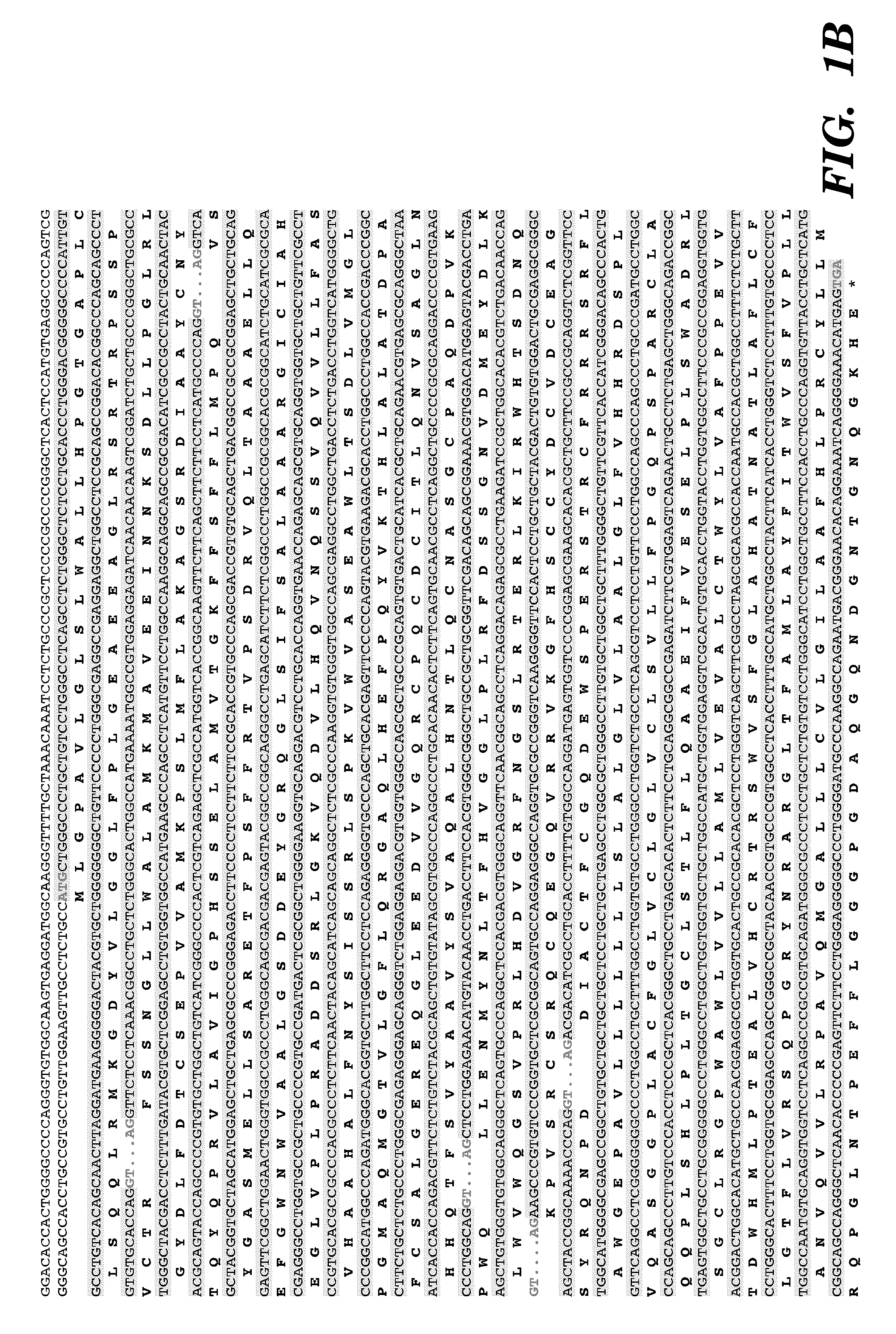T1r3 a novel taste receptor
a receptor and g protein technology, applied in the field of discovery, identification and characterization of g protein coupled receptors, can solve the problems of inability to clone sweet-responsive receptors, inability to identify taste transduction, and limited progress in this field, and achieve the highest level of gene expression, high degree of structural similarity, and high degree of expression
- Summary
- Abstract
- Description
- Claims
- Application Information
AI Technical Summary
Problems solved by technology
Method used
Image
Examples
example
Cloning and Characterization of the T1R3 Gene
[0081]The data presented below describes the identification of a novel taste receptor, T1R3, as being Sac. This identification is based on the following observations. T1R3 is the only GPCR present in a 1 million bp region of human genomic DNA centered on the D18346 marker most tightly linked to Sac. Expression of T1R3 is narrowly restricted and is highly expressed in a subset of taste receptor cells. Expression of T1R3 in taste receptor cells overlaps in large part with known and proposed elements of sweet transduction pathways (i.e. α-gustducin, Gγ13. T1R3 is a family 3 GPCR with a large extracellular domain sensitive to proteases (a known property of the sweet receptor). Most tellingly, a polymorphism in T1R3 was identified that differentiated all taster strains of mice from all non-taster strains: T1R3 from non-tasters is predicted to contain an N-terminal glycosylation site that based on modeling of T1R3's structure would be expected ...
PUM
| Property | Measurement | Unit |
|---|---|---|
| pH | aaaaa | aaaaa |
| temperature | aaaaa | aaaaa |
| nutritive value | aaaaa | aaaaa |
Abstract
Description
Claims
Application Information
 Login to View More
Login to View More - R&D
- Intellectual Property
- Life Sciences
- Materials
- Tech Scout
- Unparalleled Data Quality
- Higher Quality Content
- 60% Fewer Hallucinations
Browse by: Latest US Patents, China's latest patents, Technical Efficacy Thesaurus, Application Domain, Technology Topic, Popular Technical Reports.
© 2025 PatSnap. All rights reserved.Legal|Privacy policy|Modern Slavery Act Transparency Statement|Sitemap|About US| Contact US: help@patsnap.com



